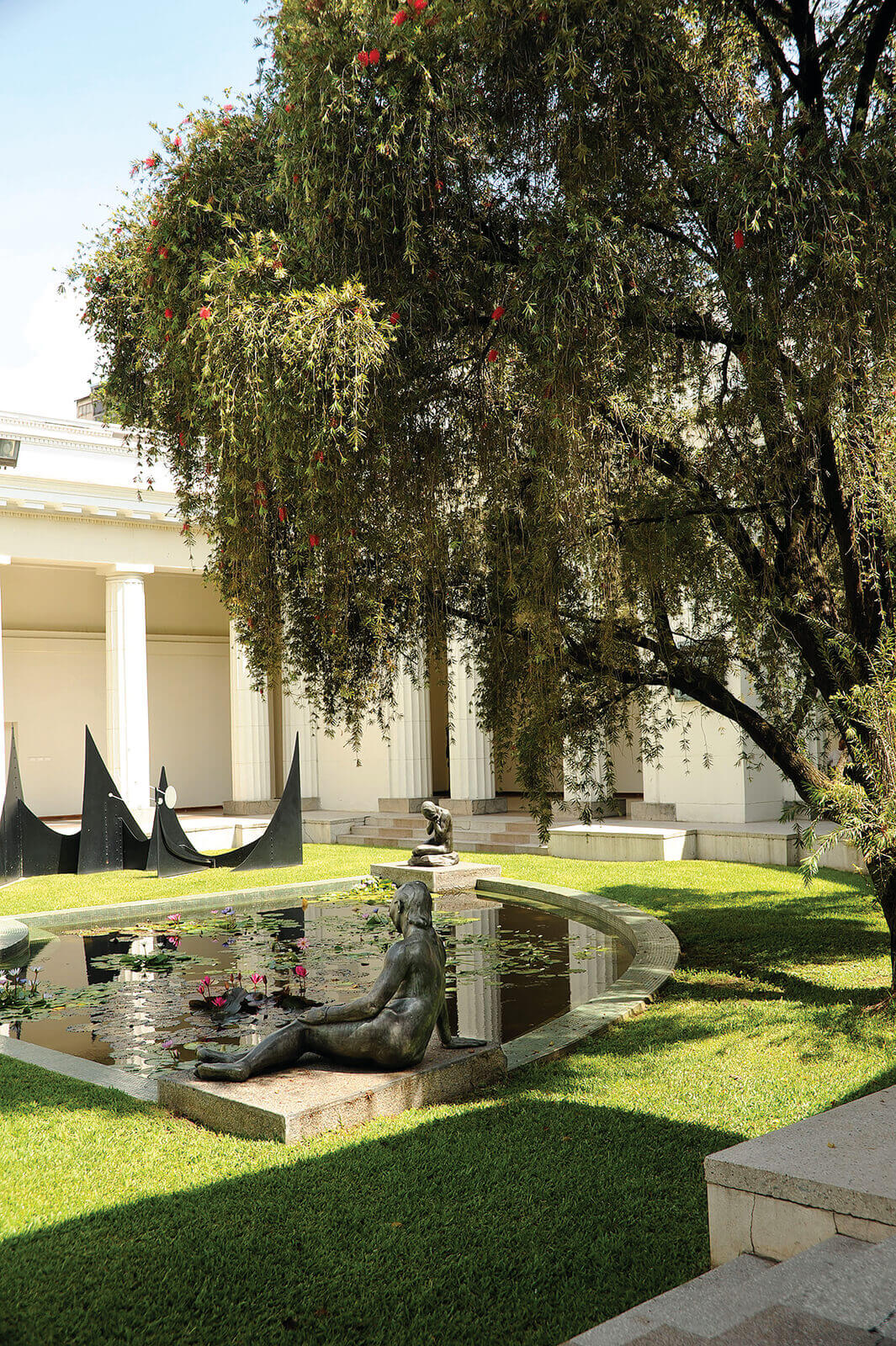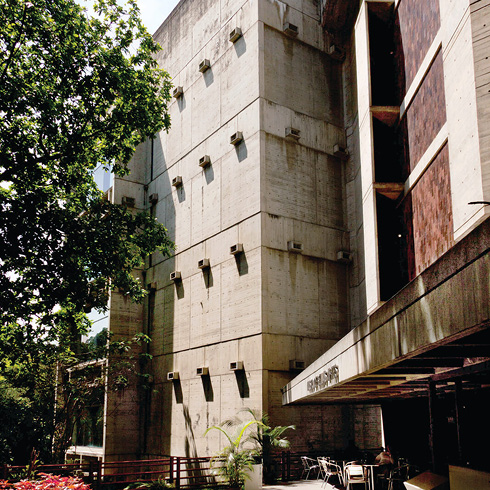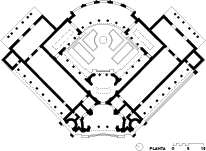DF-57
The works of Villanueva’s eclectic period are rigorously axial, following the French beaux-arts tradition. However, the Museum of Fine Arts and the Museum of Science correspond to a novel typological conception, where courtyards, corridors and rooms allowed an independent monumental iconography previously unprecedented in the city. From an urban point of view, the Museum of fine Arts extends its façades to build a piece of the city, a balanced and symmetrical public space. The building’s shape is born from radial geometry, establishing, from the axis, a sequence of spaces that make the building, and its modest program is organized around a courtyard from where you access the pleasantly proportioned rooms. From the entrance portico, framed by four columns, two lateral façades open out, arranged like two monumental colonnades. Inside, a main corridor borders the fan-shaped open courtyard. According to Sybil Moholy Nagy, the Museum’s charm lies in the «interior-exterior rhythm of its rooms». The neoclassic façade has three reliefs depicting female figures allegorical to painting, sculpture and architecture, by Francisco Narváez (1905-1984). Inside are three emblematic modern works: The City by Alexander Calder, Neon Cube by Jesús Soto and Solar Structure by Alejandro Otero. The museum was expanded in 1952.

planta

AMU




